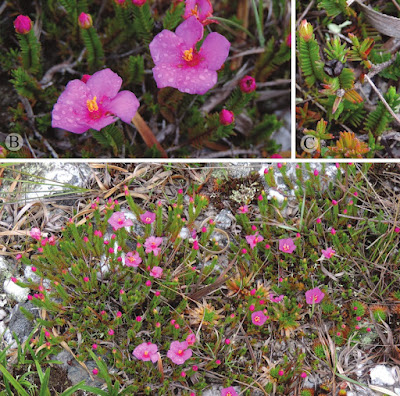Abstract
A new species of Leptobrachella, L. wumingensis sp. nov., was described from the Damingshan National Nature Reserve, Wuming District, Nanning City, Guangxi, China based on morphological, molecular and bioacoustic data. Phylogenetic analysis of 16S mtDNA fragments revealed that the new species is closely related to L. damingshanensis. Uncorrected p-distances between the new species and all homologous DNA sequences available for the 16S gene of Leptobrachella are greater than 7.1%. Morphologically, L. wumingensis sp. nov. differs from its congeners in several ways, including a medium body size (SVL 26.0–26.7 mm in males, 30.6–34.8 mm in females), lack of toe webbing and lateral fringes, shagreened and granular dorsal surface, pale brown dorsum with darker brown markings, iris bicolored, with the upper half copper and fading to silver in the lower half, and the presence of small irregular black spots and tangerine tubercles on the flanks. Furthermore, we found the new species to have two types of advertisement calls and relatively high dominant frequencies, making it distinct from its congeners.
Key words: Bioacoustics, molecular analyses, morphological characters, sympatric species, taxonomy
 |
| Morphological characters of Leptobrachella wumingensis sp. nov. (NNU 01058) A dorsal view B ventral view C, D lateral view E ventral view of hand F ventral view of foot. |
Leptobrachella wumingensis sp. nov.
Diagnosis: Leptobrachella wumingensis sp. nov. is classified under Leptobrachella based on specific morphological features, including its relatively small body size, presence of an inner metacarpal tubercle, macro-glands on the supra-axillary and femoral glands, lack of vomerine teeth, and a whitish vertical bar on the anterior tip of the snout, according to previous studies (Dubois 1983; Lathrop et al. 1998; Delorme et al. 2006; Matsui 2006). Leptobrachella wumingensis sp. nov. can be differentiated from other species in its genus by a combination of the following characters: (1) medium size (SVL 26.0–26.7 mm in males, 30.6–34.8 mm in females); (2) absence of toe webbing and lateral fringes; (3) shagreened and granular dorsal surface; (4) pale brown dorsum with darker brown markings; (5) iris bicolored, with the upper half copper and fading to silver in the lower half; (6) presence of small irregular black spots and tangerine tubercles on the flanks; and (7) two types of advertisement callings and high dominant frequencies.
Etymology: The specific name ‘wumingensis’ is derived from the type locality, Wuming District, Nanning City, Guangxi, China. The proposed common name in English is Wuming Leaf Litter Toad, and in Chinese, it is called Wu Ming Zhang Tu Chan (武鸣掌突蟾).
Wei-Cai Chen, Wan-Xiao Peng, Peng Li and Gui-Dong Yu. 2023. A New Species of the Genus Leptobrachella Smith 1925 (Amphibia, Anura, Megophryidae) from Guangxi, China. ZooKeys. 1178: 1-16. DOI: 10.3897/zookeys.1178.106038







































